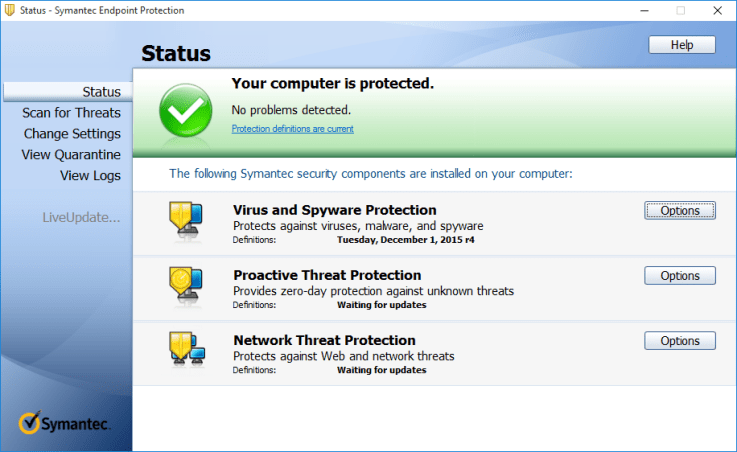
- #Remove symantec endpoint protection 14.1 manually upgrade
- #Remove symantec endpoint protection 14.1 manually password
- #Remove symantec endpoint protection 14.1 manually windows
Referencesįor a list of available MSI command line switches, type msiexec /? at the command prompt. CleanWipeįor difficulty with uninstalling Endpoint Protection, see also: Uninstalling Symantec Endpoint Protection with the CleanWipe utility. DLL: C:\WINDOWS\Installer\MSI14D.tmp, Entrypoint: CustomAction_SxsMsmCleanupġ: sxsdelca tried opening key w/o wow64key 2: Software\Microsoft\Windows\CurrentVersion\SideBySide\PatchedComponents 3: 672 4: 0ġ: sxsdelca tried opening wow64key 2: Software\Microsoft\Windows\CurrentVersion\SideBySide\PatchedComponents 3: 680 4: 0 MSI (s) (0C:34) : Invoking remote custom action. MSI (s) (0C:20) : Doing action: SxsUninstallCA The uninstaller is trying to find some keys which are present in a 64-bit operating system, but they do not exist on a 32-bit operating system:Īction ended 13:37:50: InstallFinalize. Repeat this for each instance of msiexec.exe listed.
#Remove symantec endpoint protection 14.1 manually windows

Note: If the MSI uninstall has stopped responding, follow these steps: THE ABOVE COMMAND line examples are the ones to use for a third-party tool for uninstall, for example what command-line to pass via SCCM
#Remove symantec endpoint protection 14.1 manually upgrade
Manually uninstall An圜onnect, upgrade Windows, then reinstall An圜onnect. For example, the key for Symantec Endpoint Protection 12.1.671.4971 is A3AEEA68-AC93-4F6F-8D2D-78BBF7E422B8. Antispyware (endpoint.as) and antivirus (endpoint.av) are both categorized as.

#Remove symantec endpoint protection 14.1 manually password
You can disable password protection from SEPM:

Note: If you have password protected client uninstallation, you should disable it first and then run the script. A successful uninstall will return a message that ends with "ReturnValue: 0".Run the following command: (Get-WmiObject -Class Win32_Product -Filter "Name='Symantec Endpoint Protection'" -ComputerName.Open a PowerShell Window as Administrator.


 0 kommentar(er)
0 kommentar(er)
